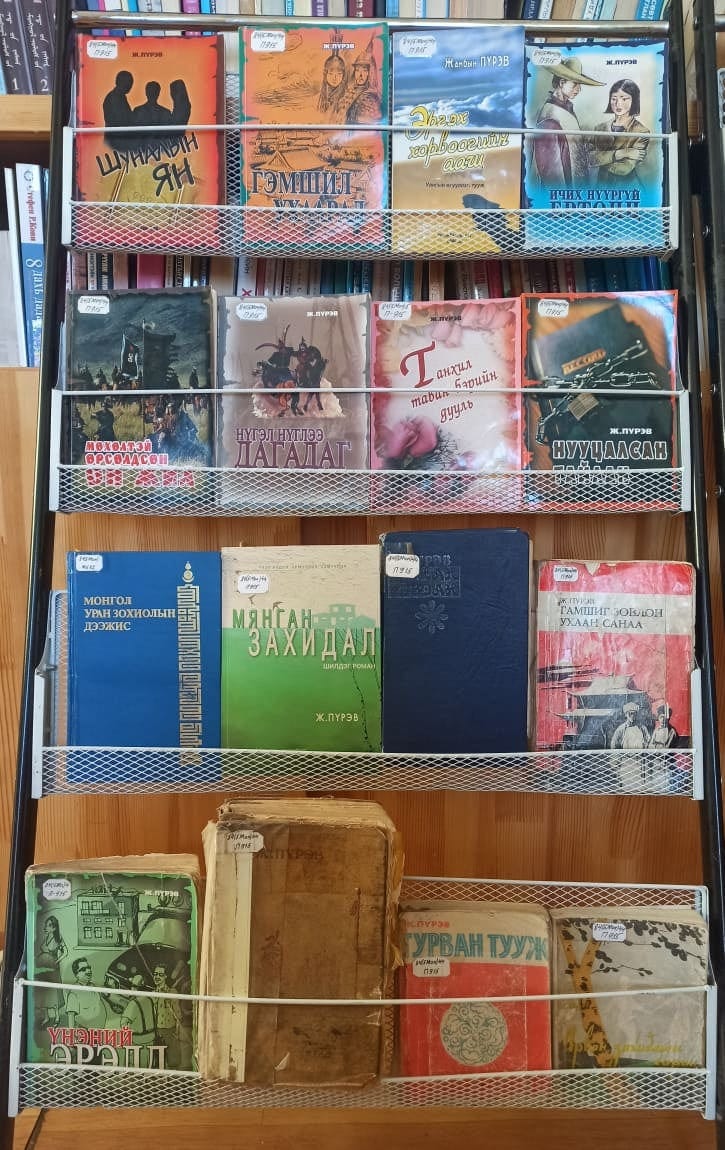Modern Mongolian literature nowhere to be found
How Mongolians struggle to preserve its contemporary Mongolian Literature, and what are its implications?

If you Google "Mongolian books," the results are disheartening: over 90 percent are authored by foreigners recounting their experiences in Mongolia or stories pertaining to the life of Chinggis Khaan. The sole contemporary book that doesn’t use Mongolia as a backdrop for their adventures is "The Green-eyed Llama," a novel by former politician Oyungerel Tsedevdamba. In contrast, if you google Japanese books, you will not only get recommendations of books set in different eras but in different genres, and all of them are Japanese authors. This starkly reflects a cultural paradox: while Mongolia does boast extraordinary writers and storytellers in our recent history, their works remain under-preserved and largely invisible to the greater world—even to Mongolians themselves.
This topic came about when I watched a video by former Parliamentary Speaker Zandanshatar Gombojov, albeit unintentionally. The video, ostensibly a PR piece, where he gives three “recommendations” of historical fictional classics against the backdrop of his new office working for the President. While his recommendations, all written in the socialist era, are undeniably outstanding fictional works. However, their inaccessibility speaks volumes.
The three books showcased in the video appeared to be original editions from the 1970s or 1980s—visually striking but inaccessible. While they looked good on camera, recommending them to the public feels out of touch, as these titles are nearly impossible to find in stores.
Take "Zurkhnii Khilen" (Fury of the Heart) by Purev Jamba, which depicts the Khotogoid rebellion against Manchu rule in the 17th century. Despite its reprints in 2015 and 2019, finding a copy today is an exercise in futility. The book was adapted into a 2017 film, but it failed to resonate with critics. The adaptation doesn’t capture the depth of Mongolia’s struggle against the Manchu and missed the essence of the book’s message entirely. The film was in name only and seemed more like a futile attempt to capture a Hollywood-esque film with a CGI-generated wolf that might have blatantly ripped and stitched from the Twilight movies.
The other two titles—"Gazar Shoroo" (Land and Soil) by Maam Dugerjav and "Ontsgoi Erkh" (Special Rights) by Darisuren Lkhamjav—fare no better. Gazar Shoroo is also about Mongolians struggling under Manchu rule, but it is set at the tail end of their rule. The book is not only historical fiction, but it also depicts dozens of Mongolian cultural rituals, including weddings, cairn worship, longevity, dispelling curses, and so forth. Ontsgoi Erkh is a spy thriller set during the Battles of Khalkhin Gol in 1939. The book was banned when it came out and found resurgent popularity when Mongolia became a democracy in 1990.
All of these books explore critical moments in Mongolian history but are inconveniently inaccessible to most people now. You are able to find one or three copies of it in local libraries or secondhand book stores, but you will not find a reprint of these books in bookstores. This scarcity reflects a broader cultural negligence: Mongolia’s literary gems are overshadowed by Western imports or forgotten altogether.
While countries such as Japan and China translate and export their literary heritage. Last year, the Japanese government planned to spend less than a million dollars to translate Japanese literary works and raise awareness of them in other countries. In contrast, Mongolia's cultural strategy appears to be obsessed with Western copying rather than protecting its literary uniqueness. Meanwhile, Mongolian readers who want to reconnect with their past must seek secondhand bookstores or, more likely, rely on pirating digital copies if set classics.
I used to think there was a cultural renaissance with books in Mongolia. But people who write books and collect books would tell you otherwise. In 2016, acclaimed Mongolian author Ayurzana Gun-aajav lamented that books in Mongolia sell more poorly than Toyota Land Cruisers in the country. The average print run of 5,000 copies of original Mongolian books can take more than six years to sell out, a damning statistic in a nation eager to modernize but unwilling to value its literary past.
Mongolia faces both an internal cultural crisis and an existential struggle to define itself. Without access to stories that go beyond our circular tents, it’s difficult to articulate what distinguishes Mongolians today. The Great Mongolian writer and poet Natsagdorj Dashdorj’s short story Son of the Old World tells the story of how Mongolians became enlightened after the great revolution. The story also serves as a great metaphor: Mongolians living under a cauldron, unaware of the world outside, until light breaks through. Today, it feels as though the “new son” has not only left the cauldron but forgotten what it was entirely.



